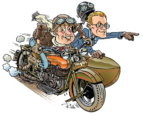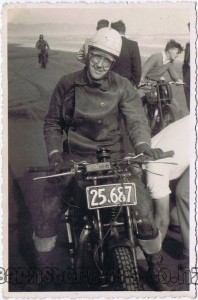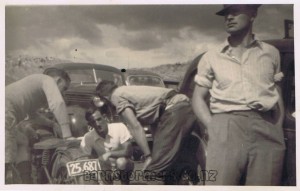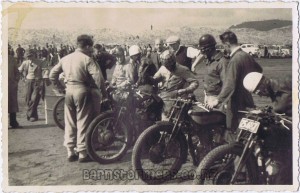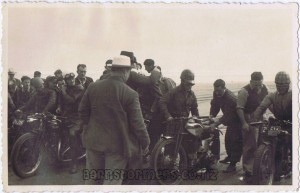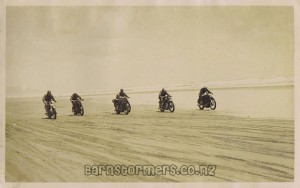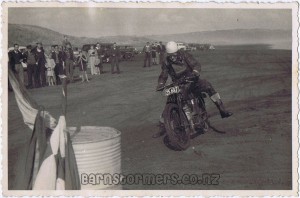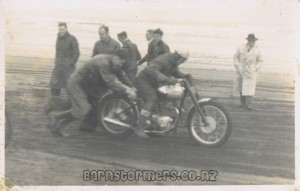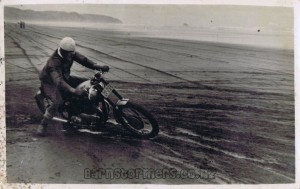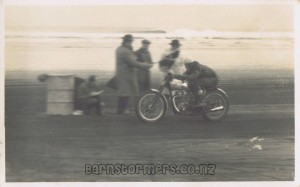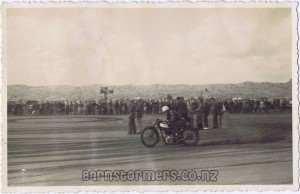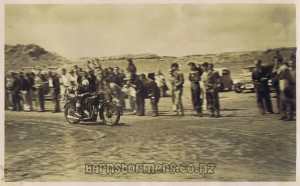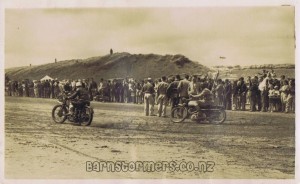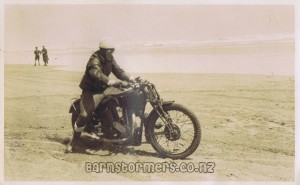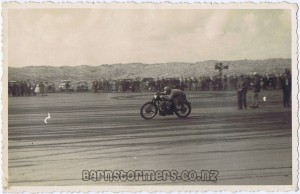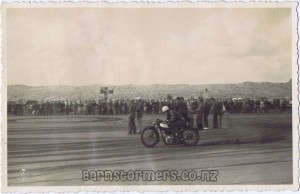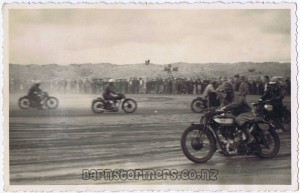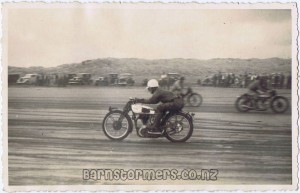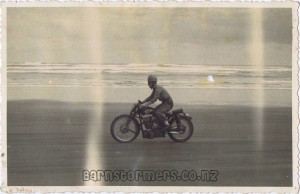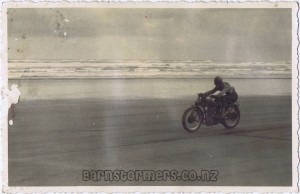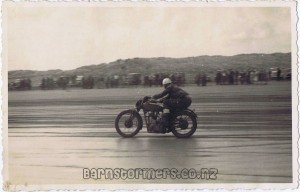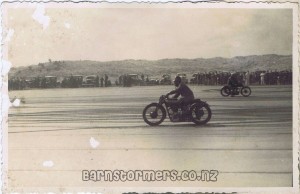Beach racing has its origins going way back to the 1910s where the beach was one of the few places that racing could take place. Road racing was yet to start and any competition on the roads was as time trials. Early beach racing events had races for both motorcycles and cars at the same event, probably due to very few motorcycles about. There are a few photographs in the Turnbull Library from the 1920s and 30s from New Brighton Beach, Christchurch, and from around Levin.
I became acquainted as a spectator with beach racing in the 1970s and early 1980s when the Papakura Motorcycle Club used to run events at Kariotahi Beach, just outside Waiuku. Sights of out of control GT750 Suzuki ‘Waterbottles’ roster tailing out of the corner is something that I will always remember. However as the years moved on cost, Department of Conservation Permits, restrictions, and concerns by ‘other’ people about the supposed damage to the environment made such events harder to organise that they slowly disappeared.
Recently beach racing has been made more popular by the portrayal of Burt Munros feats on Oreti beach near Invercargill in the movie The Worlds Fastest Indian. Part of the Burt Munro celebrations that are held every year in November is beach racing at Oreti Beach (providing that the weather is fine ‘cos when the weather blows she REALLY blows down south).
In the Auckland region Muriwai was the popular beach for racing and its early days are well documented in Scott Thomsons book Up To Speed (ISBN 1-877338-71-0), a biography on the Roycorft family. The first unofficial race on the beach was a car sprint in 1920.
Below are some interesting photographs from the Digger Hallam Collection (courtesy of Pete Butterworth) of Digger and other competitors racing at Muriwai beach about 1948~1949. Digger’s racing goes back to the late 1930s where he was an entrant in the New Zealand TT held on Waiheke Island . In 1941 he was successful in achieving a first place in the TT.
Interesting to note that the majority of the motorcycles are girder fork, a legacy from pre war racing due to New Zealand still recovering from WW2 and there not being very much money around (to purchase new vehicles from overseas the purchaser had to have ready access to overseas funds). However it is observed that Digger is racing a 1948 Triumph GP 500, a genuine Grand Prix racer that was only released in 1948 and would not have been cheap.
Some photographs are a bit grainy but nevertheless they are recognisable and capture an interesting time in our motorcycling history.
The man himself, Digger Hallam.
What it is all about. A scene not to dissimilar from today in the pits sharing information.
Lining up for starters orders
Rolling start the way it was done.
And did he miss the drum??
Diggers GP Triumph
A good power slide out of the corner on a girder Norton. The rows of spectators in the background are surely is a testament to the popularity of the sport. There is even a pole mounted public address system installed.
Let the rest of the photographs speak for themselves.
You may recognise somebody a grandfather, relation, or a bike. Let us know so that we can update the pics.
Thanks Pete for sharing.
